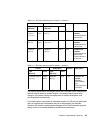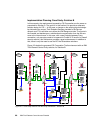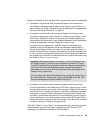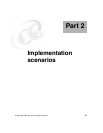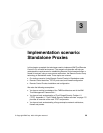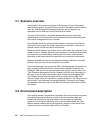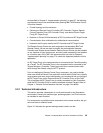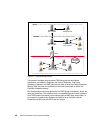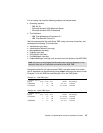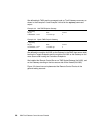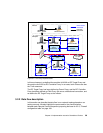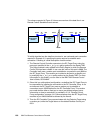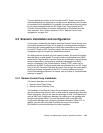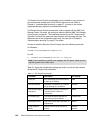Chapter 3. Implementation scenario: Standalone Proxies 95
As described in Chapter 2, “Implementation planning” on page 57, the following
are important items to be considered when planning IBM Tivoli Remote Control
3.8 across firewalls:
Firewall topology and its restrictions
Placement of Remote Control Controller (RC Controller), Targets, Remote
Control Controller Proxy (RC Controller Proxy), and remote Control Target
Proxy (RC Target Proxy)
Decision on Parent-Child relationship of RC Controller and RC Target Proxies
Communication flow: unidirectional or bidirectional communication
Hostname and the port used by the RC Controller and RC Target Proxies
The Remote Control Proxies are new components introduced by IBM Tivoli
Remote Control 3.8 and are used to simplify the communication between
Controller and Targets across firewalls. Remote Control Proxies can be installed
on any machine on your environment, and don’t need necessarily to be installed
on a machine part of the TME. We recommend that you refer to Chapter 2,
“Implementation planning” on page 57 to check the supported platforms for this
application.
An RC Target Proxy is the component that is connected to the Controllers acting
as a Target. The RC Controller Proxy is the component that is connected to the
Targets acting as a Controller. These two proxies then communicate to each
other through the firewall, using the HTTP protocol.
Prior to installing any Remote Control Proxy component, you need to decide
which one will be the Parent Proxy and which one will be the Child Proxy. Usually
to get a better and more secure configuration, we recommend that you configure
the RC Target Proxy as the Parent and the RC Controller Proxy as the Child.
This is because the RC Target Proxy is usually connected to a few Controllers,
while the RC Controller Proxy is usually connected to several Targets. Refer to
Chapter 1, “Remote Control sessions overview” on page 3 for details.
3.2.1 Technical infrastructure
This section provides a description of our lab environment for the Standalone
environment, showing the machine type, operating system, and Tivoli resource
we installed on each machine.
For convenience, we installed some components on the same machine, but you
can have them on different boxes.
Figure 3-1 illustrates the general testing scenario used in our lab.



